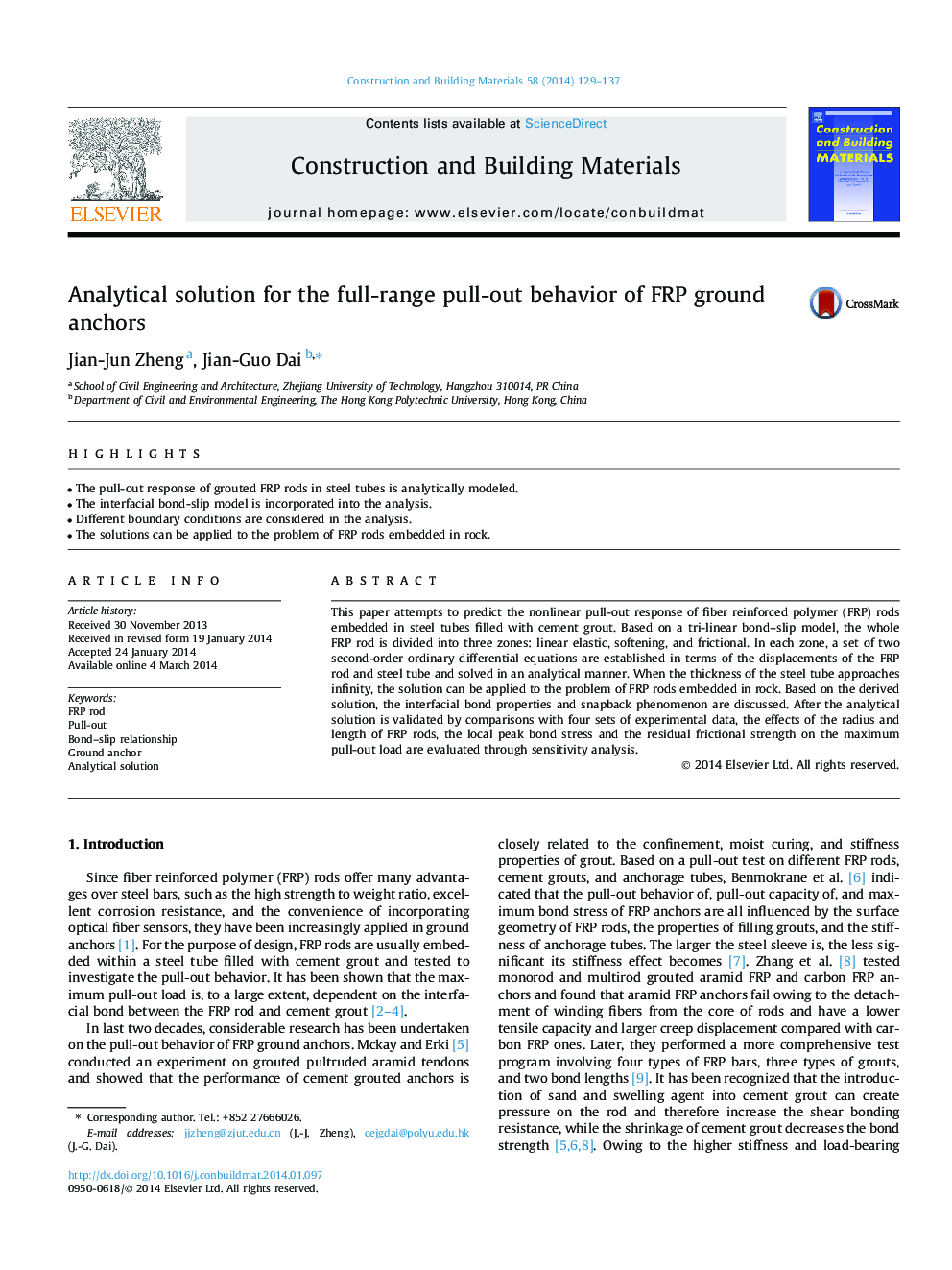| Article ID | Journal | Published Year | Pages | File Type |
|---|---|---|---|---|
| 257686 | Construction and Building Materials | 2014 | 9 Pages |
•The pull-out response of grouted FRP rods in steel tubes is analytically modeled.•The interfacial bond-slip model is incorporated into the analysis.•Different boundary conditions are considered in the analysis.•The solutions can be applied to the problem of FRP rods embedded in rock.
This paper attempts to predict the nonlinear pull-out response of fiber reinforced polymer (FRP) rods embedded in steel tubes filled with cement grout. Based on a tri-linear bond–slip model, the whole FRP rod is divided into three zones: linear elastic, softening, and frictional. In each zone, a set of two second-order ordinary differential equations are established in terms of the displacements of the FRP rod and steel tube and solved in an analytical manner. When the thickness of the steel tube approaches infinity, the solution can be applied to the problem of FRP rods embedded in rock. Based on the derived solution, the interfacial bond properties and snapback phenomenon are discussed. After the analytical solution is validated by comparisons with four sets of experimental data, the effects of the radius and length of FRP rods, the local peak bond stress and the residual frictional strength on the maximum pull-out load are evaluated through sensitivity analysis.
